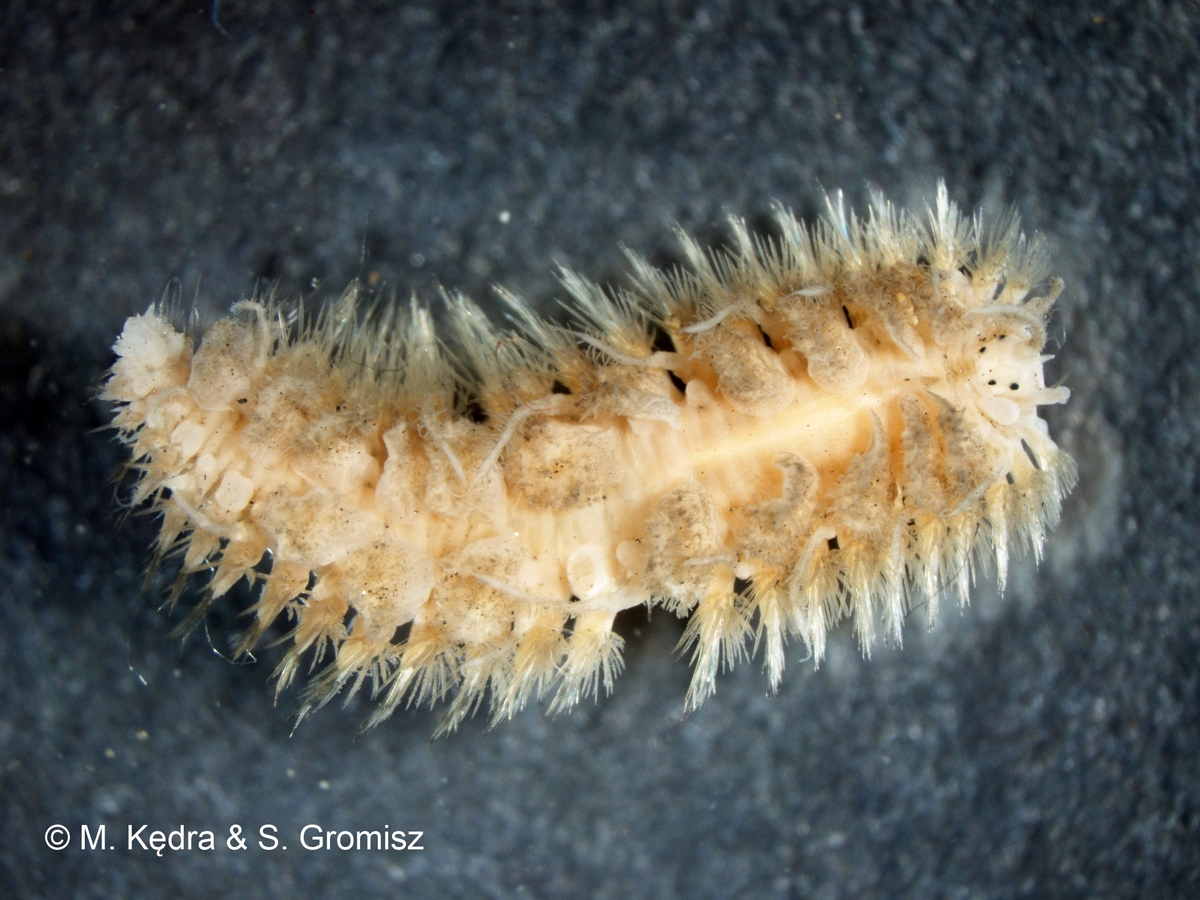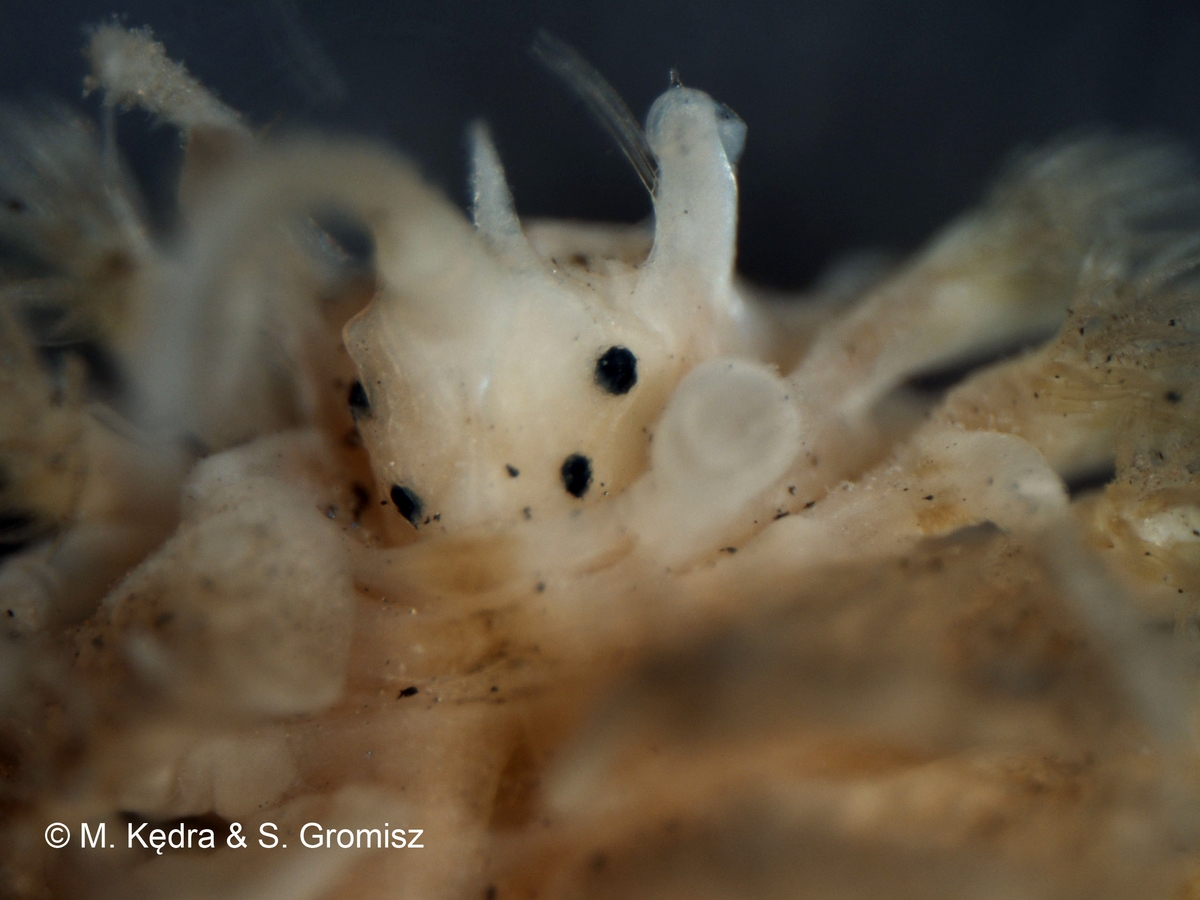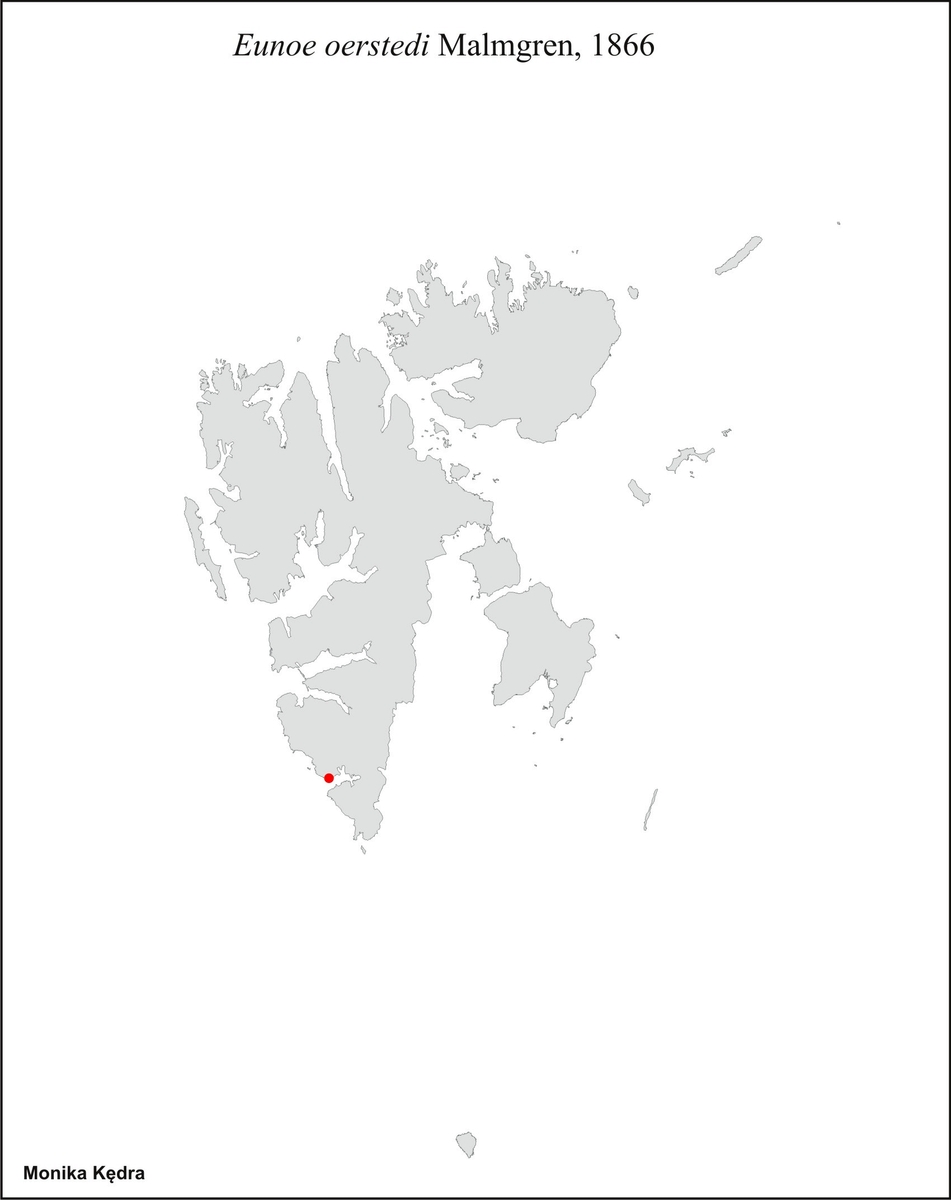Eunoe oerstedi Malmgren, 1865

|

|

|
Lepidonote scabra Örsted, 1843
Polynoe arctica Hansen, 1878
Distinguishing characteristics
Prostomium bilobed, with peaks poorly developed, lateral antennae ventrally inserted.
Anterior pair of eyes on the line of greatest width of prostomium.
Neuropodial and notopodial chaetae unidentate.
Scales with branched macrotubercles.
Species description
A scale-worm with 37- 42 chaetigers. Prostomium bilobed with a peak on each lobe poorly developed or lacking, a median antenna, a pair of lateral antennae, ventrally inserted and a pair of palps. Two pairs of large eyes, anterior pair on the line of greatest width, the posterior pair in front of the rear margin. Scales overlap, covering the body with lateral fringe of papillae and numerous microtubercles and macrotubercles. Macrotubercules branched, extremely variable in size, number, arrangement, ands shape, translucent or brownish. Neuropodial and notopodial chaetae with unidentate tips. Pygidium with dorsal anus and a pair of anal cirri.
Size
Up to 80 mm.
Color
Dorsal surface dusky, dark or greenish black; elytra brown and grey.
Habitat
Bathyal, infralittoral.
Mobility
Mobile.
Feeding
Omnivore, predator, scavenger.
Life cycle
Spawing occurs in March and April off north-east England, and the eggs are brooded under the scales. Brooding on the outside of the body with release of planktotrophic larvae.
Distribution
North West Atlantic, Spitsbergen, Iceland, Greenland, English Channel. Panarctic shelf species.

